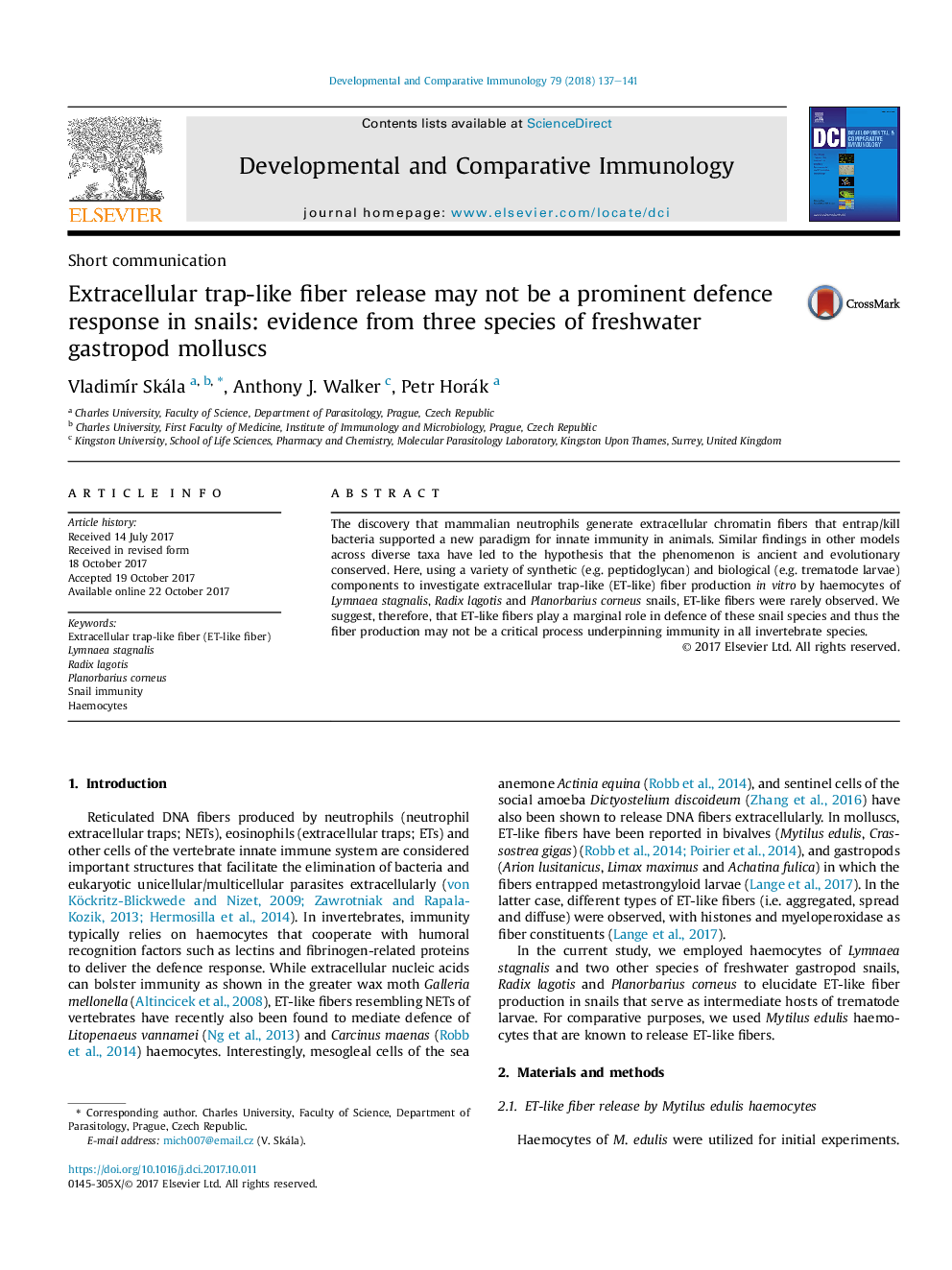| Article ID | Journal | Published Year | Pages | File Type |
|---|---|---|---|---|
| 8497871 | Developmental & Comparative Immunology | 2018 | 5 Pages |
Abstract
The discovery that mammalian neutrophils generate extracellular chromatin fibers that entrap/kill bacteria supported a new paradigm for innate immunity in animals. Similar findings in other models across diverse taxa have led to the hypothesis that the phenomenon is ancient and evolutionary conserved. Here, using a variety of synthetic (e.g. peptidoglycan) and biological (e.g. trematode larvae) components to investigate extracellular trap-like (ET-like) fiber production in vitro by haemocytes of Lymnaea stagnalis, Radix lagotis and Planorbarius corneus snails, ET-like fibers were rarely observed. We suggest, therefore, that ET-like fibers play a marginal role in defence of these snail species and thus the fiber production may not be a critical process underpinning immunity in all invertebrate species.
Related Topics
Life Sciences
Biochemistry, Genetics and Molecular Biology
Developmental Biology
Authors
VladimÃr Skála, Anthony J. Walker, Petr Horák,
